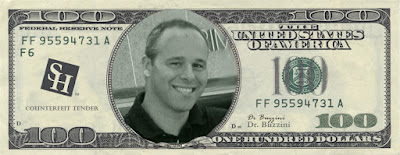Dr. Patrick Buzzini of the Department of Forensic Science received a National Institute of Justice grant to develop chemical signatures for counterfeit currency or questioned documents produced with inkjet printers that can help lead investigator back to the source. Dr. Buzzini is collaborating with the U.S. Secret Service on the project.
“We are trying to develop a tool that can work at the investigative level,” said Dr. Buzzini. “Our hope is to produce chemical profiles that will be able to inform investigators about brands and models of printers used.”
More than 60 percent of counterfeit bank notes classified by the U.S. Secret Service are made using inkjet printers because of their low cost and wide availability. Inkjet printers also may provide valuable evidence in questioned documents in such diverse cases as extortion, questioned contracts, identification documents, or anonymous letters.
In typical cases of counterfeit or questioned documents, a suspected document is compared to a reference sample using an optical inspection usually followed by thin layer chromatography to address questions about their source. This investigation will use a different method – micro Raman spectroscopy – to determine to what extent suspected documents can be linked back to a source based on the three main color components of the system, including mixes of cyan, magenta and yellow.
Spectroscopy methods – in this case used to detect dyes and pigments – study the interaction between light and materials. The Raman method measures the phenomenon of inelastic light scattering produced at the molecular level. In order to analyze fully this highly complex data, Dr. Buzzini will team up with Dr. James Curran of the University of Auckland in New Zealand to develop a novel statistical approach to analyze the results. “He will help maximize the extraction of highly complex data,” Dr. Buzzini said.
The study will examine about 100 samples provided by the Criminal Investigation Division of the Treasury Obligation Section of the U.S. Secret Service. The samples will be evaluated using both thin layer chromatography and Raman spectroscopy.
“Our goal is to investigate if Raman data gathered from three microscopic colored spots of inkjet printed document constitute, all together, a chemical signature sufficiently discriminating to provide reliable investigative leads in a time-effective and non-destructive manner,” said Dr. Buzzini.
